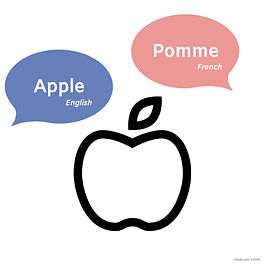Selected Academic Publications
Highlights from selected research projects published in international peer-reviewed academic journals

Patterns of language switching and bilingual children’s word learning: An experiment across two communities
This study explored whether different patterns of language switching affect bilingual children’s word learning—a question that is often asked by caregivers raising bilingual children. Our results show that different patterns of bilingual interaction provide equal learning opportunities for bilingual children’s vocabulary development.

Cognates are advantaged over non-cognates in early bilingual expressive vocabulary development
Do bilingual infants learn similar-sounding cross-language words like banana-banane more rapidly than dog-chien? Our results show that the ease with which bilingual infants build their two lexicons could be impacted by how similar words in their two languages are, and words with the largest phonological overlap may be the most advantaged in early bilingual vocabulary acquisition.

Are translation equivalents special? Evidence from simulations and empirical data from bilingual infants
We developed a computational model to quantify translation equivalent learning in bilingual infants, where translation equivalent learning is proposed as the joint probability of learning the words in each language as a pair. Our findings revealed that translation equivalent learning can be quantified within the context of bilingual infants’ everyday word learning, which depends on bilingual infants’ own vocabulary size in each language and their developmental level.